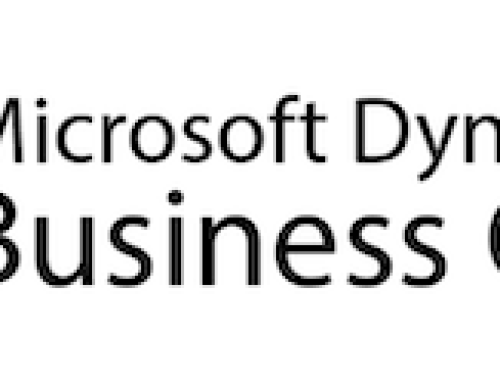
When it comes to choosing the right ERP solution for your business, the decision goes far beyond just looking at features. It’s about finding that sweet spot between powerful functionality and cost-effectiveness. As we help businesses navigate this decision every day, we’ve found that understanding the pricing structure of Microsoft Dynamics 365 Business Central doesn’t have to be complicated. Let’s walk through everything you need to know about investing in this robust business management solution.
The Basics of Business Central Licensing
Think of Business Central licensing, like choosing a cable TV package – you can opt for the basic channels or go for the premium package with all the extras. Microsoft offers two main license types: Essential and Premium.
Essential License
The Essential license is perfect for businesses needing core financial and operational functionality. The Essential license is like your basic cable package – it gives you all the fundamental channels you need to run your business effectively. Here’s an example, Sarah runs a growing distribution company. With an Essential license, she manages her company’s finances, tracks inventory across three warehouses and handles customer service operations all in one place. The Essential license gives her team everything they need for daily operations without breaking the bank. This includes:
- Financial management
- Supply chain management
- Basic customer service
- Project management
- Human resources management
Premium License
The Premium license, on the other hand, is like upgrading to the deluxe package with all the premium channels. Take Marcus, who operates a manufacturing facility. He needed the Premium license because, beyond basic operations, his team requires advanced features for production planning and warehouse management. The premium features help him track products from raw materials through to finished goods, with detailed cost analysis at every step. The Premium license builds upon the Essential features, adding advanced functionality for:
- Service order management
- Manufacturing planning
- Advanced warehouse management
- Production management
Understanding User Types: Not Everyone Needs the Deluxe Package
 Just as not everyone in your household needs access to every streaming service, not every employee needs full access to Business Central. Microsoft understands this and offers different user types to help optimize your costs.
Just as not everyone in your household needs access to every streaming service, not every employee needs full access to Business Central. Microsoft understands this and offers different user types to help optimize your costs.
Full Users are like having the master remote control – they get unrestricted access to everything. Think of Anna, your financial controller, who needs to dive deep into reports, adjust system settings, and manage complex financial processes. She needs a Full User license to perform her role effectively.
Then there are Team Members, who only need to catch occasional shows – or in business terms, perform basic tasks. Consider Joe from the sales team, who mainly needs to check inventory levels and enter basic customer information. A Team Member license gives him just enough access to do his job without the cost of a full license.
Learn more about the different Business Central licenses here.
The Hidden Costs: What’s Beyond the Sticker Price
Think of implementing Business Central like buying a new car – the sticker price is just the beginning. Let’s look at what else you need to consider in your budget.
Implementation costs vary significantly based on your business’s complexity. For example, when Wilson’s Manufacturing made the switch, their implementation included transferring five years of customer data, setting up custom reports, and training 50 employees across different departments. While the initial investment was significant, their efficiency gains paid for the implementation within the first year.
Ongoing support is another crucial consideration. Just as you need regular maintenance of your car, your Business Central system needs continuous attention. Regular system updates, technical support, and user assistance ensure your system runs smoothly. One of our clients, a retail chain with 15 locations, budgets for quarterly system health checks and dedicated support hours, which has helped them avoid costly emergency fixes.
In summary, when budgeting for a new Microsoft Dynamics 365 Business Central system, consider these factors:
Implementation Costs
- System setup and configuration
- Data migration from legacy systems
- User training and change management
- Custom development (if needed)
Ongoing Support
- Regular system updates and maintenance
- Technical support
- User assistance
- System optimization
Making the Right Choice: Your Path Forward
Think of choosing your Business Central setup like planning a road trip. You need to know your destination (business goals), who’s coming along (users), what vehicle you need (licensing type), and what supplies you’ll require (additional features and support).
By working with a partner, we help you:
- Assess your specific needs
- Create a comprehensive plan for implementation
- Optimize licensing costs
- Ensure successful deployment
- Provide ongoing support and training
Next Steps

Ready to start your journey with Business Central? Let’s sit down together and map out your perfect solution. We’ll help you evaluate your current processes, identify the right mix of licenses, and create an implementation plan that fits your budget and timeline.
Whether you’re a small business looking to streamline operations or a large enterprise seeking to transform your processes, we’re here to guide you every step of the way. Contact us today to start building your roadmap to more efficient business management with Microsoft Dynamics 365 Business Central. If you prefer, you can start with the Microsoft Dynamics 365 Licensing Guide and then give us a call. Download Here
Note: Prices and licensing terms are subject to change. Contact us for the most current pricing information for your region and specific requirements.
By CAL Business Solutions, Connecticut Microsoft Dynamics GP / 365 BC & Acumatica Partner, www.calszone.com
















